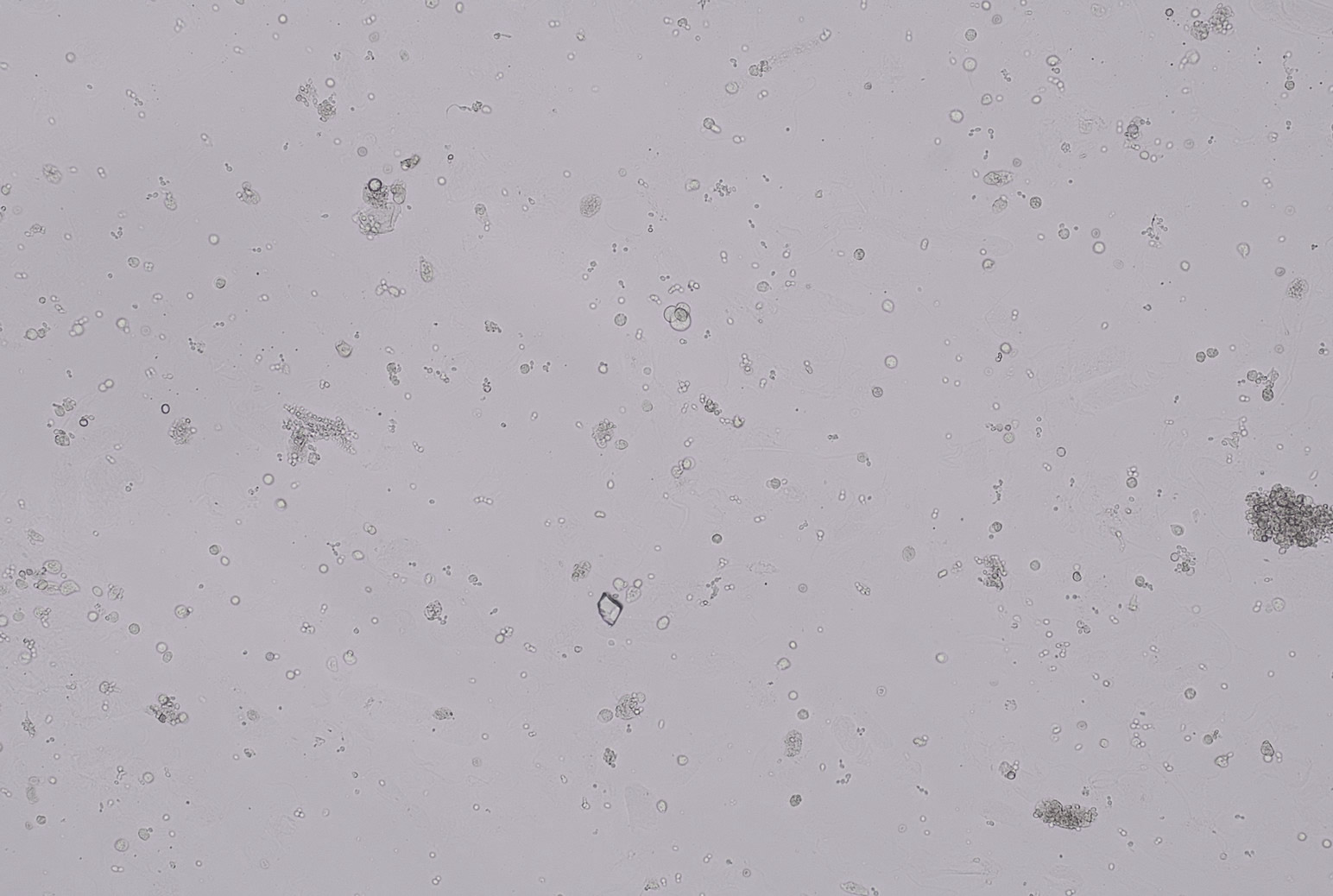Hyaline cast
Synonyms: Cast
Casts are elongated structures formed in the renal tubules and composed mainly of uromodulin, also known as Tamm-Horsfall protein. This glycoprotein is secreted by cells in the ascending Lis of Henle and the distal tubule segment. The formation of casts is promoted by acidic pH and concentrated urine, conditions that allow the precipitation of uromodulin in a gel-like structure. During their formation, casts can enclose other components from the tubular fluid, such as cells, fat droplets or granular (granular) debris, creating different types of casts. In a sense, therefore, a cast can be considered a "biopsy" of the part of the tubule in which it is formed. Casts are visible microscopically, usually under bright-field microscopy, but their detection depends on their composition and transparency.
A hyaline cast consists entirely of uromodulin, with no enclosed cells or other material; they are "empty" casts, so to speak. Because of this, they are usually translucent and difficult to see with bright-field microscopy – they only stand out well when using phase contrast or in highly concentrated urine. Hyaline casts can occur in healthy individuals, especially with mild dehydration, fever, intense physical exertion or the use of diuretics. Thus, they are not necessarily pathological. In stored urine, they may disappear, especially if the urine becomes more alkaline.
Individual








Technique





































































